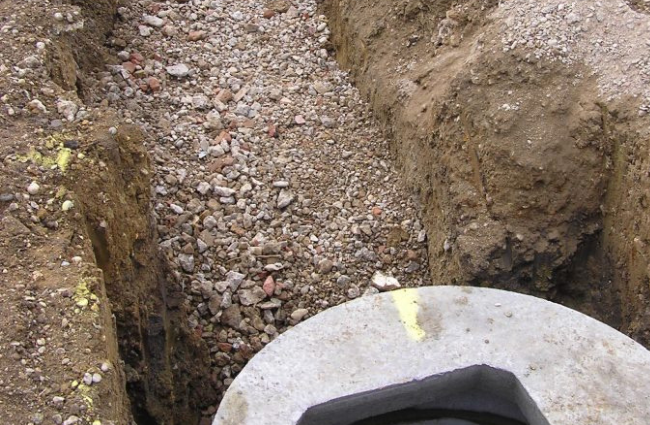The Value of French Drains in Controlling Water Flow

Your property needs to properly drain water to protect your home. Foundations in particular need to be protected from pooling water and seepage. So the property surrounding your structure needs to be engineered to divert water from storms off the property easily.
And you may need to work with your neighbors. If their land stands at a higher elevation than yours, you may receive their water run off. One option in such cases is excavating your property: Digging trenches and installing French drains to divert the water flow away from buildings.
A “French drain” is usually a trench in which a drain pipe is laid, with the trench then filled in with gravel and covered with sand and topsoil as needed. There are variations (some simpler drains dispense with the pipe.)
Trenching as a Tool in Draining Your Property
It is best to work with an experienced landscaper to determine the best drainage system your property needs, but here are some basic factors that should be considered:
- Where is the water coming from? Are you downhill from other properties that are draining water into your property? Are you on a flat area where water simply pools and is absorbed into the soil? Is it just heavy storms that cause the problem, or regular weather?
- Where does the water currently go? Is it pooling against your foundation? Is water flow eating away at soil structures around the foundation, driveway or other property features? What needs to be protected?
- Where should it be routed? Where does the excavator need to dig? Is there a public storm drain at the foot of your property? Do you need to avoid channeling water onto a neighbor’s property? Is there an open, sandy place on your property where storm runoff could harmlessly pool and percolate into the soil?
- How best to channel the water in the right direction? What drainage design do you need? Where should the trenches be dug to build the French Drains? Are there other techniques, like terracing, that might also be effective?
Important: Check your community regulatory codes and utilities maps before bringing in a Bay Area team to Bay Area excavation team to improve your property.
French Drains need some slope to work. Trenching lines should be plotted out before the backhoes start digging. A grade of 1% (a drop of 1 foot for every 100 feet in length) is often recommended; others advise a drop of 6 inches for every 100 feet, leading to the water’s desired destination.
Trench width will depend on the magnitude of your drainage problem. Bigger moisture problems call for wider trenches.
Trenching is a Natural Part of Excavating
We excavate for a living, and that involves doing all the trenching and material installation that a property must have to drain properly. If you need more information, or a referral to a landscaper who can help with drainage system design, contact us!

